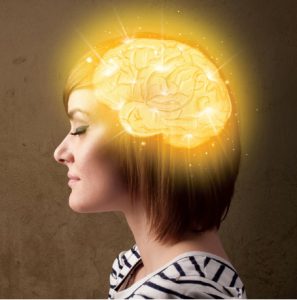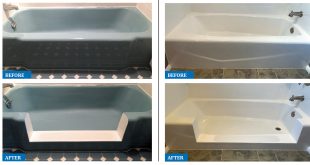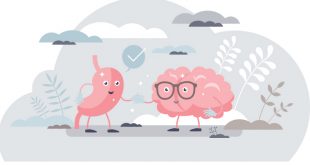By Renee Chillcott, LMHC
 “Happy” is a term we hear often but what does it really mean? We all want to be happy, therefore, we make decisions that make us happy, and we are very aware of when we are not happy, but what exactly is “happy”? For the most part, happy is a positive feeling that drives us to pursue it. The search for happy or happiness is a life-long process. What does it mean, then, to make your brain happy?
“Happy” is a term we hear often but what does it really mean? We all want to be happy, therefore, we make decisions that make us happy, and we are very aware of when we are not happy, but what exactly is “happy”? For the most part, happy is a positive feeling that drives us to pursue it. The search for happy or happiness is a life-long process. What does it mean, then, to make your brain happy?
When our brain releases neurotransmitters or feel-good chemicals such as dopamine, serotonin, and endorphins, we notice a lift in our mood, or a feeling of euphoria, a “pep in our step”. We go through life believing that these chemicals “just happen”, are always present or are only produced when we adjust our environment. The perfect job, the perfect house, the perfect relationship, or the perfect family are all benchmarks we use to measure happiness. But what if I told you that happiness only exists inside our brain and that only we can make our brain “happy”.
Here are just 5 ways you can make your brain produce “happy” chemicals:
5. PRACTICE GRATITUDE
You can practice gratitude regularly by writing in a journal, being mindful, and meditating on all the good things in your life or finding ways to show appreciation to those close to you. Gratitude can also be in the form of volunteering, contributing to a charity, or spiritual worship.
4. MOVE YOUR BODY
Get up and move daily for at least an hour to release endorphins and boost your mood. Movement, thinking, and talking all boost serotonin and dopamine levels in the brain as well. Walking, biking, talking, playing games, learning something, reading, writing and enjoying/experiencing nature are all ways to make your brain “happy”. Avoid over-exertion or artificial stimulation as these things create “stress” on a brain that obstructs “happiness”.
3. YOU ARE WHAT YOU EAT
Nutrition has an essential role in the proper release of chemicals in our brain and as a result, will have a tremendous impact on our brain. The gut and brain are connected; therefore, we must not ignore one or the other in our pursuit of “happy”. We are learning more and more about how “good nutrition” goes beyond eating healthy. Good nutrition should incorporate an individualized look at how our bodies are reacting, digesting, and absorbing nutrients from the food we eat.
2. SURROUND YOURSELF WITH SUPPORT
Finally, surrounding yourself with those who are positive and supportive will stimulate the release of “feel good” brain chemicals and help you remain in a peak state. And just as import as social support, make sure you are including the proper supplement support. Work with a specialist to be sure you are taking natural supplements that help facilitate an increase in the levels of chemicals that cause happiness.
1. TRAIN YOUR BRAIN WITH NEUROFEEDBACK
Brain chemicals are also called Neurotransmitters. A Neurotransmitter is: any of a large number of chemicals that can be released by neurons to mediate transmission of nerve signals across the junctions (synapses) between neurons. When triggered by a nerve impulse (event, feeling, or sound), the neurotransmitter is released from the terminal button, travels across the synaptic cleft, and binds to and reacts with receptor molecules in the postsynaptic membrane. Simply put, neurotransmitters are the chemical needed to make an electrical charge that fires a neuron across a synapse.
WHAT HAPPENS IF MY BRAIN ISN’T HAPPY, DESPITE MY BEST EFFORTS?
If neuron firing patterns in the brain are imbalanced or stuck, this process does not work as it should. The result is an improper response. For example: If I engage in any of the activities listed above that are supposed to elicit a “happy” response in my brain, but instead I am sad, anxious, irritable, frustrated, etc. then the correct or appropriate chemicals did not get released; meaning that my neurons did not fire in the correct or appropriate way. If this is happening, then EEG Neurofeedback is needed to correct or re-train the neuron firing pattern so that the correct response does happen and I, in turn, can make my brain “happy”.
WHAT IS NEUROFEEDBACK?
Neurofeedback has been studied and practiced since the late 60’s. It is exercise for your brain; allowing you to see the frequencies produced by different parts of your brain in real-time and then through visual and auditory feedback, teaches the brain to better regulate itself. Neurofeedback can be used to help detect, stimulate, and/or inhibit activity in the brain safely and without medication. It can help restore a wider “range of motion” in brain states, much like physical therapy does for the body.
While the client sits comfortably watching a movie or pictures appear on the screen (a calm and focused state), the EEG equipment measures the frequency or speed at which electrical activity moves in the areas where electrodes have been placed. This information is sent to the therapist’s computer. The therapist is then able to determine what frequencies are out of balance. For example, when the EEG shows that you are making too many “slow” or “sleepy” waves (delta/theta) or too many “fast” waves (high beta), the therapist adjusts a reward band (on the therapist’s screen) to encourage more balanced activity. This encouragement or “reward” happens through an auditory reinforcement of “beeps” and sometimes through visual reinforcement of changes on the client’s screen.
It is important to understand that the neurofeedback approach does not “cure” or “fix” your brain. We teach and guide your brain to produce frequencies which help it relax and/or focus. We provide the brain with gentle “challenges” and encouragement in a user-friendly, stress-free format so it learns to regulate or shift to healthier states more smoothly on its own at the appropriate time.
WHAT TYPES OF CONDITIONS DOES NEUROFEEDBACK HELP?
Symptoms of these conditions, among others, can improve through neurofeedback training:
• Anxiety • Sleep disorders • Depression • ADD/ADHD • Sensory processing disorder • Bipolar Disorder
• Seizure disorders • Auditory/visual processing
• Chronic pain/Fibromyalgia • Migraines/headaches
• Traumatic brain injuries • Stroke • Cognitive decline
• Peak performance • Oppositional defiant disorder
• Rages/mood swings • Attention/focus/concentration
• Reactive attachment disorder • Autism/Asperger’s
• Learning disabilities • Obsessive Compulsive Disorder
WHAT IS AN EXAMPLE OF IMPROVEMENTS I MAY SEE?
At our center, our goal is to teach you how to tune into your own functioning. With children, we also teach the parents how to look at overall functioning rather than piecing together events or moments. We help you open your mind to possibilities with Neurofeedback rather than give too many examples that confuse the process or feel like a placebo. Changes you may experience or observe after a session are indicative of a learning process that will lead to improved functioning. Examples of those positive changes may be improvements in:
- Sleep patterns/quality of sleep
- Energy levels, calmer or more activated
- Ability to focus or concentrate
- Physical symptoms such as pain, headaches, migraines, tics, balance issues
- Mood or emotions
- Motivation and organization
- Feelings of Well Being
- Obsessive behaviors or thoughts
- Memory/cognitions
- Anxiety patterns or trauma patterns
- Coping
- Regulation
- Learning, communicating, and/or performance
HOW DOES A “BEEP” OR SOUND TRAIN MY BRAIN TO WORK BETTER?
The auditory or sound reward that corresponds to an increase or decrease in desired brainwave activity can affect the brain on a neurological level. Auditory reward stimulates auditory pathways, impacts the vestibular system, and has many connections to the reticular activating system, which modulates wakefulness and attention. These systems operate in our brains without conscious effort. Therefore, neurofeedback teaches your brain through automated learning with little or no behavioral effort. Another way to say this is that neurofeedback involves operant conditioning or learning. This type of learning teaches us through a reinforced reward system. The auditory reward (beep) is delivered on a schedule of reinforcement that promotes optimal learning; not too hard and not too easy. This schedule of reinforcement or reward provides just the right amount of resistance to evoke a positive learning pattern.
HOW MANY SESSIONS ARE NEEDED TO BEGIN SEEING RESULTS?
As the brain learns, you will see the changes. However, everyone learns at different speeds, so it cannot be determined how quickly someone will learn. On average, children take about 10-20 sessions to see changes and we can discuss what to expect during the intake appointment. For adults changes are usually noticed within 10 sessions. Total treatment is an average of 40 sessions; however, we individualize all aspects of treatment and find that some people need more and some less.
WHAT IS A QEEG (QUANTITATIVE EEG) OR BRAIN MAP AND DO I NEED ONE?
The QEEG is a quantitative EEG. It’s also called a brain map and does just that…it gives us a map of what is going on with the entire brain at one time. We attach electrodes to the whole head, 19 spots, and then record the brain waves with his eyes open for 5 minutes and with his eyes closed for 10 minutes. This recording is then read and analyzed. We are able to provide you with a summary of significant findings and show the results of analyzing the data several different ways. The brain activity is not only compared spot by spot over the entire head, but we can also look at connections, symmetry, and how different parts are communicating. It can help us see what areas need to be addressed more efficiently than just training spot by spot or by looking at a surface or “quick” EEG.
We don’t always need this data to make an improvement in symptoms, but we do recommend it in certain situations. A QEEG can also be helpful information when diagnosing and/or trying to decide the best medication/supplement recommendations.
DOES NEUROFEEDBACK HURT?
Neurofeedback is a non-invasive, non-medication, and most importantly a non-painful approach. Your experience will be very relaxing and positive. We gently teach your brain how to regulate more efficiently and do not force your brain into a brain state that is not comfortable.
HOW DO I GET STARTED?
Getting started is easy. The Brain and Wellness Center staff will answer all of your questions, and help you get scheduled with a free telephone consultation. E-mail, text message or call us today! Brain and Wellness Center, 7301 W. Palmetto Park Rd., Suite 102A, Boca Raton, FL 33433. (561) 206-2706, e-mail us at
info@bocabraincenter.com, or text us at (561) 206-2706 or visit our website at www.BocaBrainCenter.com.
 South Florida Health and Wellness Magazine Health and Wellness Articles
South Florida Health and Wellness Magazine Health and Wellness Articles




